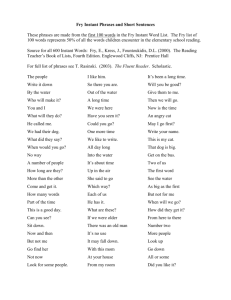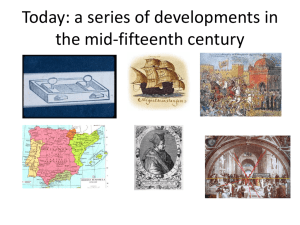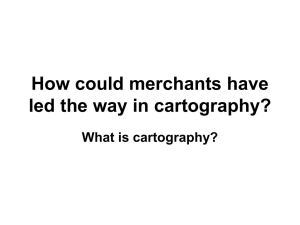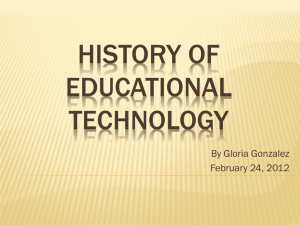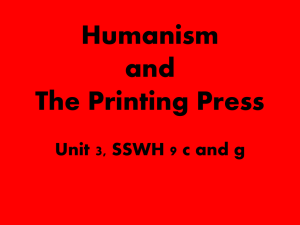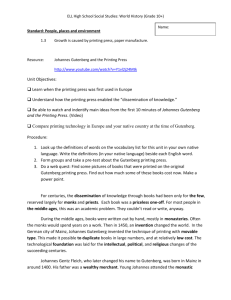APL Film Analysis
advertisement
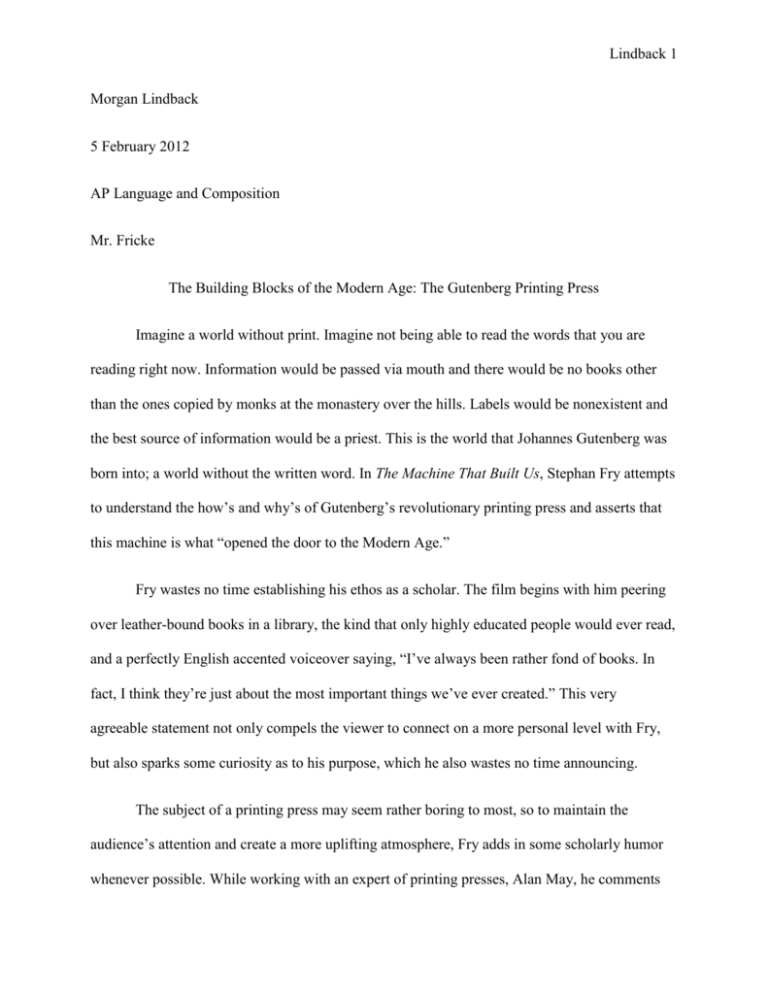
Lindback 1 Morgan Lindback 5 February 2012 AP Language and Composition Mr. Fricke The Building Blocks of the Modern Age: The Gutenberg Printing Press Imagine a world without print. Imagine not being able to read the words that you are reading right now. Information would be passed via mouth and there would be no books other than the ones copied by monks at the monastery over the hills. Labels would be nonexistent and the best source of information would be a priest. This is the world that Johannes Gutenberg was born into; a world without the written word. In The Machine That Built Us, Stephan Fry attempts to understand the how’s and why’s of Gutenberg’s revolutionary printing press and asserts that this machine is what “opened the door to the Modern Age.” Fry wastes no time establishing his ethos as a scholar. The film begins with him peering over leather-bound books in a library, the kind that only highly educated people would ever read, and a perfectly English accented voiceover saying, “I’ve always been rather fond of books. In fact, I think they’re just about the most important things we’ve ever created.” This very agreeable statement not only compels the viewer to connect on a more personal level with Fry, but also sparks some curiosity as to his purpose, which he also wastes no time announcing. The subject of a printing press may seem rather boring to most, so to maintain the audience’s attention and create a more uplifting atmosphere, Fry adds in some scholarly humor whenever possible. While working with an expert of printing presses, Alan May, he comments Lindback 2 that, “woodwork was never my strongest subject in school, but no one seems to have told Alan that.” Although this statement holds little importance to what is going on, it provides viewers with the pathos of happiness. Fry sustains this feeling while in an art museum with more remarks like, “You can never be sure you’re looking at the real Mr. Gutenberg. So whether or not Gutenberg had three hands, like this one here, whether or not he looked like David Tenant as Dr. Who or whether or not he had a fish-shaped beard stuck to his face… Perhaps he looked like you, or me. Rather unlikely, he would have been burned if he would have looked like me.” Such humor is welcomed by viewers. They enjoy enjoying themselves and it is this sense of humor that keeps the audience watching. By adding informational voiceovers throughout the video, Fry not only upholds his ethos, but he also establishes logos. Instead of rattling off historical facts in front of the camera, Fry uses many short voiceovers in conjunction with scenes of him traveling from place to place in Europe. For example, the audience hears that within fifty years of the printing press there were more than 20 million books printed and sees scenes of Fry visiting the “Gutenberg Bible” (the first book printed on Gutenberg’s press) or him looking at a more recent press. This technique adds some flavor to what could have easily been a very bland dish. The experts presented in the film help stress the importance of the Gutenberg’s printing press. Although most viewers do not realize it, just the fact that there are experts on the subject illustrates that it has significance. Furthermore, the manner in which they are presented and how they present themselves enhances their testimonies. The expert primarily presented in the film, Alan May, has studied printing presses and woodwork for most of his adult life. He aids Fry on his quest to figure out the “how’s” of Gutenberg’s printing press by actually making one. His elevated vocabulary, vast fifteenth century tools and work area show him as skilled in his field. Lindback 3 May proves to be even more accomplished when he brings in a fellow expert, Martin Andrews, for an opinion. This not only provides the work with a peer review, but it also gives more expert testimony. Andrews, who has studied similar subjects to May, is amazed by May’s work and helps explain to viewers the physics of the machine. His pressed collared shirt and quick thinking demonstrates his competence. Both of these scholars give the film a sense of validity that it would most surely lack without them. In conclusion, Stephen Fry accurately and artfully displays how the work of Johannes Gutenberg’s printing press gave way to our current day and age. He supplies his audience with more than enough information and testimonies to certify his claim, while still keeping it upbeat with humor and diverse cinematography. Fry’s audience will no doubt finish the film with a sense of enlightenment and contentment, all the while understanding that how they are living today is because of Gutenberg’s printing press. Lindback 4 Works Cited Daily Motion, , prod. The Machine That Made Us. Perf. Stephen Fry. www.dailymotion.com, 2010. Film. <http://www.dailymotion.com/video/xdtq64_the-machine-that-made-us-13_shortfilms>.

